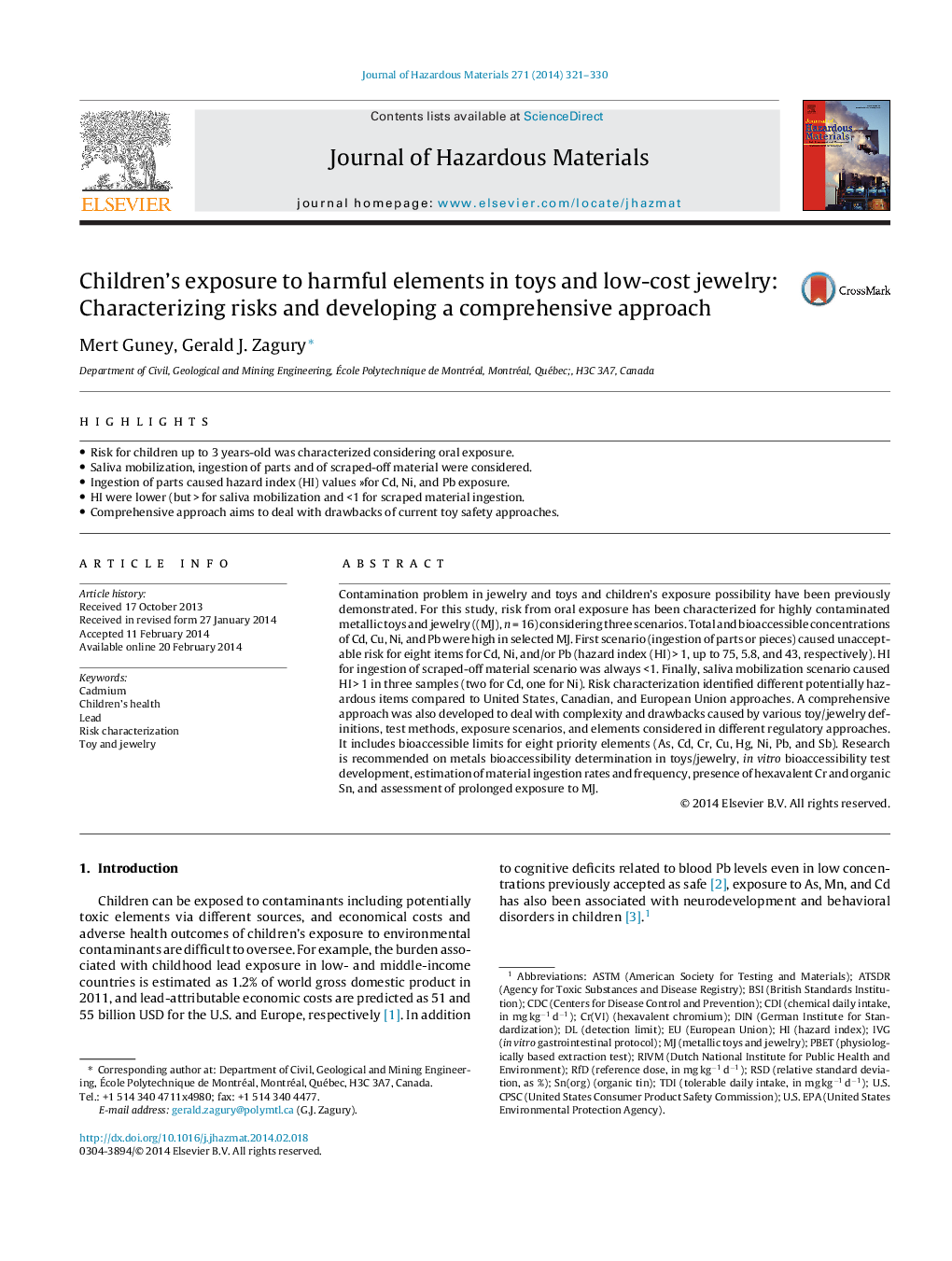| Article ID | Journal | Published Year | Pages | File Type |
|---|---|---|---|---|
| 6971682 | Journal of Hazardous Materials | 2014 | 10 Pages |
Abstract
Contamination problem in jewelry and toys and children's exposure possibility have been previously demonstrated. For this study, risk from oral exposure has been characterized for highly contaminated metallic toys and jewelry ((MJ), n = 16) considering three scenarios. Total and bioaccessible concentrations of Cd, Cu, Ni, and Pb were high in selected MJ. First scenario (ingestion of parts or pieces) caused unacceptable risk for eight items for Cd, Ni, and/or Pb (hazard index (HI) > 1, up to 75, 5.8, and 43, respectively). HI for ingestion of scraped-off material scenario was always <1. Finally, saliva mobilization scenario caused HI > 1 in three samples (two for Cd, one for Ni). Risk characterization identified different potentially hazardous items compared to United States, Canadian, and European Union approaches. A comprehensive approach was also developed to deal with complexity and drawbacks caused by various toy/jewelry definitions, test methods, exposure scenarios, and elements considered in different regulatory approaches. It includes bioaccessible limits for eight priority elements (As, Cd, Cr, Cu, Hg, Ni, Pb, and Sb). Research is recommended on metals bioaccessibility determination in toys/jewelry, in vitro bioaccessibility test development, estimation of material ingestion rates and frequency, presence of hexavalent Cr and organic Sn, and assessment of prolonged exposure to MJ.
Related Topics
Physical Sciences and Engineering
Chemical Engineering
Chemical Health and Safety
Authors
Mert Guney, Gerald J. Zagury,
